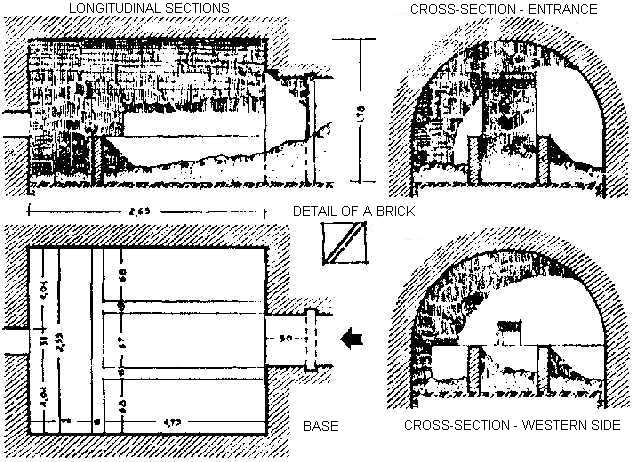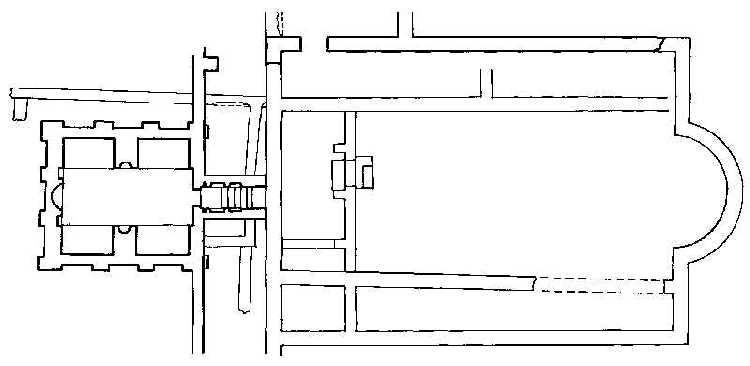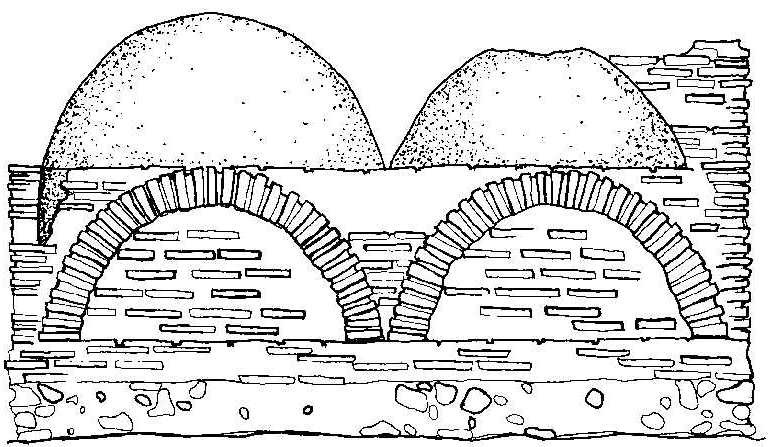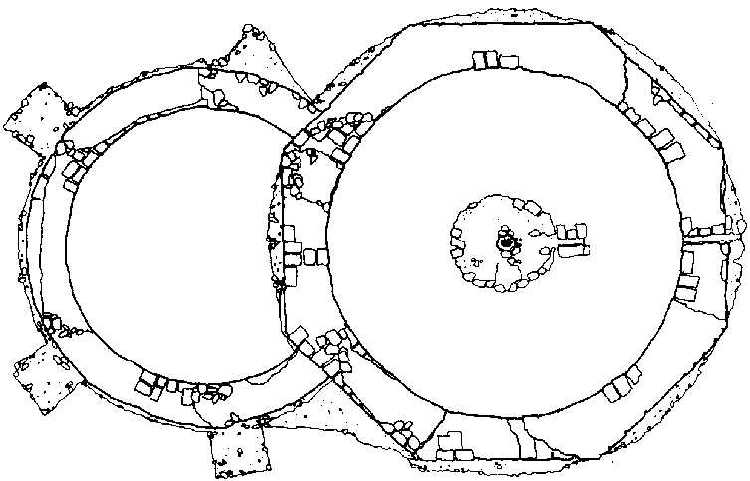
Regardless of problems, the Christianity achieved significant results in Niš, owing to its strong community. This is particularly true for the 4th century, when Niš had baptisteries, churches and necropolis and was an episcopal center known for the relics of its martyrs.

Early Christian frescoed crypt in Jagodin Mala -The base and sections
This was witnessed by Priscus, who visited Niš in 488, after it had been destroyed by Huns.
Numerous archeological findings have revealed the abundant early-Christian past of Niš. In the town area called Jagodin Mala, on the locality of late-antique and early-Christian necropolis, the remnants were discovered of four early-Christian churches designed in the basilica style. The church from the locality of the Monastery of St. Panteleimon has been investigated in more details, and so is the three-aisled basilica with a martyry. The latter has a martyry on its west side.

Basilica with the martyry, base
The monumental martyry and impressive dimensions of the church represent a specific cult building in which the relics of martyrs had been kept. This representative basilica with martyry might just be the place that had stored the relics of local martyrs Niš was famous for all around the Christian Europe in the 4th century.
Tens of crypts were found in the rich early-Christian necropolis in Jagodin Mala. Some of them are semi-cylindrically vaulted, while others, which are bigger in dimensions, are covered with one or two domes. A crypt with two domes, identical to the one discovered in Jagodin Mala, may be seen in Niška Banja.

Early-Christian crypt in Niška Banja, a look from the south
It seems that Niš started counting its Christian days on the late-antique locality of Mediana.

Early-Christian baptistery in Mediana, base
Northwest of the antique palace, in the part where the nympheum and thermae had been located, the first Christians of Niš built a baptistery. One of the oldest baptisteries in the Balkans, it is dated to the second half of the 4th century. After the period of two centuries in which the baptizing had been conducted in rivers, lakes and seas, baptisteries appeared as early as in the 3rd century. During the 4th century, especially at its end, baptisteries were built near basilicas. In the same manner, the early-Christian baptistery in Mediana, alike the rest of them throughout the Christian world, is not an independent building, but a part of a complex architectonic structure. In accordance with the known historical facts, this early-Christian complex should have contained an episcopal basilica. These Christian antique constructions merged with the nearby Roman buildings.